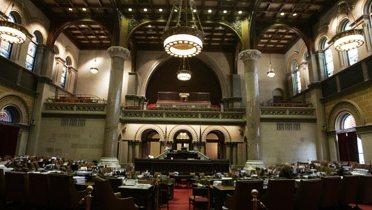When he visits a battery plant in Holland, Michigan, today, President Obama will talk about the connection between innovation, advanced manufacturing, and economic growth. But he has an opportunity to make an even more important connection: between government action and innovation.
At a time when the federal government seems unable to manage anything well, and state governments are still grappling with budget shortfalls and crippling layoffs, it is easy to forget that the public sector is a critical driver of innovation, particularly in the energy sector. As James Duderstadt, Mark Muro, and others have pointed out, there are several market failures that cause private energy companies to systematically underinvest in innovation. One in particular stands out:
“Social benefits accrue from the knowledge created by innovative activity, which is added to the public domain once created and is hard for firms to control. Other firms may make use of this knowledge and reap the rewards, encouraging free-riding behavior where firms fail to invest and wait for other firms to finance the knowledge base.”
Venture capital, which is often a source of funding for emerging technologies, also is riddled with its own kinds of market failures. This analysis of venture capital investing in the Great Lakes region (which I’ve written about before) explains it’s not efficient for venture capitalists to track down every possible good opportunity in their sector. Instead, they maximize their chances of finding good investments by focusing on where they’ve been successful in the past, where most deals come from, and, honestly, where they can get to easily. That helps explain why California and Massachusetts get such a huge amount of VC investment, and why places like Holland, Michigan, often get overlooked.
One of the reasons governments exist is to overcome these kinds of market failures. Like roads, weapons systems, and public education, innovation is a public good, something that the public sector has to provide at an optimal level.
Thus, the Recovery Act allocated $2 billion to advanced battery technologies. Under Governor Jennifer Granholm, the state of Michigan also poured $1.38 billion into advanced battery research, as part of its efforts to help the auto industry in the state re-orient itself after decades of crushing job losses.
As the state and federal governments are looking for more and deeper cuts, the public seems to understand that some things are worth investing in. Last year, Ohio voters approved a $700 million bond issue to preserve the Third Frontier, the state’s program to invest in new technologies and their commercialization. This is an encouraging piece of evidence that voters understand the difference between debt or spending that lays the foundation for future growth, and that which does not make sense during a fiscal crisis.
Of course, having just agreed to cut $2.4 trillion from the federal budget over the next 10 years, Obama isn’t likely to call for the kind of federal spending on innovation that’s actually needed. And even if he did, there’s little chance Congress would agree. While Obama’s budget submissions for the last two years have proposed increasing key energy innovation spending, Congress has responded with cuts. In FY 2011, the federal energy innovation budget dropped 10 percent compared to the previous year. The House appropriations committee proposed $491 million in additional cuts from the Office of Energy Efficiency and Renewable Energy, which is almost $2 billion below the president’s budget request.
But Obama still can and should make a clear and explicit argument about the value of government spending. Government money can be intelligently applied to do good –good that would not happen otherwise. In the current political environment that’s a radical and counterintuitive statement, but that doesn’t make it any less true.






Commentary
Government as Innovation’s Spark Plug
August 11, 2011